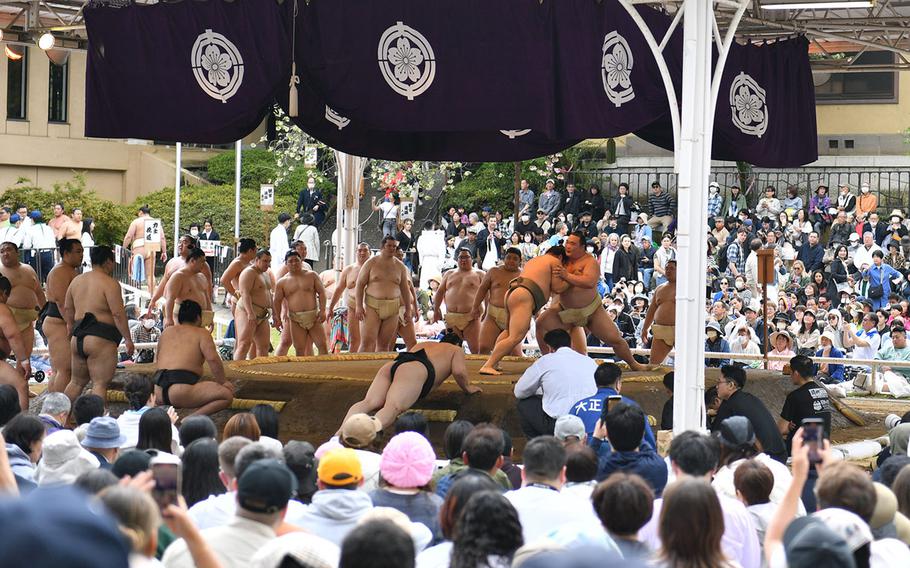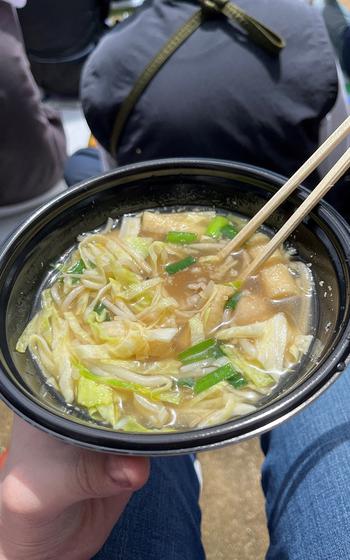
Sumo wrestlers warm up before ahead of their bouts at Yasukuni Shrine in Tokyo, April 14, 2025. (Jeremy Stillwagner/Stars and Stripes)
On a crisp morning each April, the solemn stillness of Yasukuni Shrine is interrupted by the rhythmic stomp of sumo wrestlers and the murmur of picnickers staking out a view of the action.
The controversial Tokyo shrine’s wide stone path, normally reserved for quiet prayers and camera-clicking tourists, transforms into a place of spectacle and celebration.
At the center of this one-day event is a sumo ring, built temporarily near the shrine’s entrance. Wrestlers from across Japan descend on the capital to pray for strength and entertain the public with warm-up routines, mock bouts and mingling with fans.
By 9 a.m., every inch of tarp-covered ground is claimed. Spectators who queued as early as sunrise settle in for a long day of sport, tradition and spring weather.
Children wave at wrestlers who pause for selfies. Vendors sell bowls of chanko nabe — a hearty stew eaten by sumo wrestlers to bulk up — and shaved ice, though most food stalls run dry before noon. Around midday, the ring goes quiet for a short theatrical interlude — wrestlers reenact classic moves and humorous skits before the competition resumes.

Chanko nabe, a traditional stew of meat and vegetables popular with sumo wrestlers, is served at Yasukuni Shrine in Tokyo, April 14, 2025. (Jeremy Stillwagner/Stars and Stripes)
Built in 1869, Yasukuni Shrine was intended as a sacred site to honor the souls of those who died in service to the emperor. Today, more than 2.4 million names are enshrined there — from samurai killed in the 19th century to those convicted of crimes in World War II. The adjacent museum presents a narrative of Japanese military history that is both patriotic and, critics say, selective in its omissions.
This annual sumo event takes place each April, though the date shifts slightly every year. Admission is free, but capacity is limited. The venue opens around 8:30 a.m., with festivities running into late afternoon. Weather may cancel the event, so check the Japan Sumo Association’s spring tour schedule for updates.
Bring a mat or cushion, sunscreen and snacks — or arrive early enough to beat the rush on food stalls. Once you leave the sumo area, reentry is not permitted.
On the QT
Directions: A 10-minute walk from Kudanshita Station; look for Exit 1 for more convenient access to the shrine.
Time: The sumo event happens on day each year in mid-April, from 8:30 a.m. to 4 p.m. The date shifts annually, so check the Japan Sumo Association’s spring tour schedule for updates.
Costs: Free
Food: Vendors chank nabe, grilled meats and vegetables, desserts and drinks during the event.
Information: Online: sumo.or.jp/EnJungyo/schedule